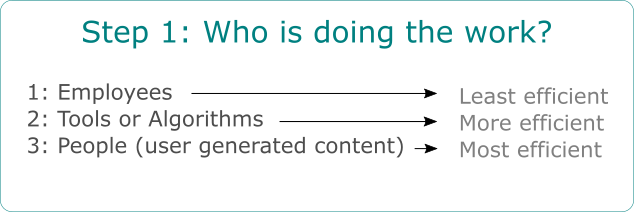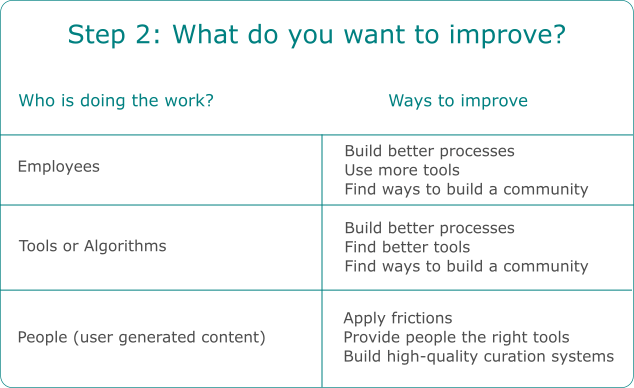How Processes help to Continually grow a Nonprofit
Do you want to continually grow your Nonprofit, Social Enterprise, NGO? Be sure to have excellent processes in place. Here’s how processes can help.

So, I read a lot of Marketing, Startup, and Nonprofit related articles.
It occurred to me that most articles are about: How to improve X when doing Y, right? How to get more followers on LinkedIn, how to rank better in Google, 5 design elements that’ll improve your time on site, etc.
Don’t get me wrong. I think they’re great!
But I would like to give you a friendly reminder of one often overlooked aspect of continually growing your nonprofit:
Processes!
Elon Musk noted in a video that in order to build better Tesla cars, he needs to improve the factory that builds those cars.
Many nonprofits are doing well, but in a financial crisis, they’re looking at improving processes and they often find that there are a lot of things that they can improve.
I say, let’s repair the roof while it’s sunny outside. Let’s not wait until it rains.
Trust me, doing this is not going to be boring and you’ll get a lot better results after this assessment.
I mean, what’s boring about being able to double the number of visitors you’re getting in half the time or budget?
Let’s begin!
How to start assessing your processes so you know how to improve
Most processes fall in one of these three categories:
- Employees do the work;
- Tools or algorithms do the work;
- People do the work (user-generated content).

(The most efficient way to run a nonprofit is by building platforms where people do the work. No wonder Facebook, GoFundMe, DonorsChoose and other platforms have grown so fast.)
After establishing this, you can think of ways to improve processes or take a leap into the next category.
For instance: you can try to figure out ways to improve the way you grow your social media following, but chances are that using tools will be your best bet.
Here are a few examples of ways to improve. I’ll discuss a few of them, but it’s up to you to discover your own areas where you can save time or money.
Think about your repeated tasks. Which things do you do daily and how can you improve?

A few ways to improve your processes
Employees do the work
Set up checklists and templates to save time
Some things, you would need to do yourself or let someone else do it. There’s no other way around it. Examples of such tasks are: writing articles, replying to emails, etc.
Improving on such tasks could be fairly easy sometimes. For instance: make use of checklists and templates. Using an email template, versus not using an email template can save you up to 30 seconds per email. That’s an hour per 120 emails! Using great checklists or templates when writing articles can save you a lot more.
Think about which task you repeat on a regular base and try to set up checklists or templates so you can complete these tasks a lot more efficiently.
Use tools to work more efficient
Every time I introduce a new tool, people get a smile on their face. They often can’t imagine how much time they can save by using the best tools. Did you know that people still use Paint to create graphics? No really, they do! So you can imagine how happy they are when I introduce them to Canva.
Tools allow you to work smarter, not harder. Check out a list I wrote about great tools you could use, here.
Find ways to build a community
I said earlier that there’s no way around writing articles yourself, but there actually is. You can inspire others to write articles on your domain. I think Moz is doing a great job with their YouMoz blog. People are more than happy to write quality content for them.
You can figure out ways to write quality articles in the least amount of time by using the best tools, but you would never match the impact of great user-generated content.
When improving your NGO, think about ways to inspire others to create content. It can be in the form of comments, social media submissions, guest posts, you name it.
Moral of the story:
Building a community is hard, it takes time, it can fail, but if you do it right, the benefits are enormous.
Tools or algorithms do the work
I think this is pretty straight forward, so I won’t be wasting your time too long.
Humans work with tools, this means you can optimize the way you use them by learning to use them more properly, you can search for even better tools (example of Paint and Canva, both tools but one is a lot better) or you can figure out how to build a community.
People do the work
This is a more complicated approach. I will try to be as clear as possible about this.
When people do the work, your main concern is inspiring people to do the work and making sure the quality is high.
To make sure the quality is high, you can add frictions. Product Hunt is a great example. If everyone would be allowed to add their product, there would be a lot of bad quality submissions.
Often times, platforms don’t add friction in the early days to promote traction. Platform owners will delete low-quality content themselves. That’s what Sean Ellis did on GrowthHackers.com But also with curating, you can let employees do the work, algorithms do the work or people (upvotes and flagging).
To inspire people to create content, you will need to provide great tools and an audience. Medium and again YouMoz does a great job in providing both.
Key takeaways
You can drive more traffic and increase conversions, but don’t forget to also address the engine behind everything, your processes. In the early days, that’s what really made a difference. Better processes meant lower production costs and thus a better competitive advantage. Remember the T-Ford?
Figure out which key areas you can optimize in your organization and you’ll notice that everything will run smoother.
Thank you for reading. Please fill free to join the conversation below. I’d love to have a chat.
FAQ
What role do processes play in the growth of a nonprofit organization?
Processes play a crucial role in the growth of a nonprofit organization by providing structure, efficiency, and scalability to operations. They help streamline workflows, ensure consistency in activities, and enable effective resource allocation.
How do well-defined processes contribute to organizational effectiveness in nonprofits?
Well-defined processes contribute to organizational effectiveness in nonprofits by establishing clear guidelines and standards for tasks and activities. They facilitate communication, collaboration, and decision-making, leading to increased productivity and better outcomes.
In what areas can processes be implemented to support the growth of a nonprofit?
Processes can be implemented in various areas to support the growth of a nonprofit, including fundraising and donor management, program development and delivery, volunteer recruitment and management, financial management, and marketing and communications.
How do processes improve efficiency and resource utilization in nonprofits?
Processes improve efficiency and resource utilization in nonprofits by optimizing workflows, reducing redundancies, minimizing errors and delays, and maximizing the impact of available resources. They help organizations do more with less and achieve their mission more effectively.
What are the benefits of documenting processes within a nonprofit organization?
Documenting processes within a nonprofit organization offers several benefits, including providing a reference for staff training and onboarding, ensuring consistency in operations, facilitating process improvement and innovation, and enabling continuity during staff transitions.
How can processes aid in risk management and compliance for nonprofits?
Processes can aid in risk management and compliance for nonprofits by establishing protocols for assessing and mitigating risks, ensuring adherence to legal and regulatory requirements, and promoting transparency and accountability in organizational activities.
How do processes support strategic planning and goal achievement for nonprofits?
Processes support strategic planning and goal achievement for nonprofits by aligning activities with organizational objectives, establishing performance metrics and benchmarks, monitoring progress, and adapting strategies as needed to achieve desired outcomes.
What role do feedback loops and continuous improvement processes play in nonprofit growth?
Feedback loops and continuous improvement processes are essential in nonprofit growth as they enable organizations to solicit input from stakeholders, evaluate performance and effectiveness, identify areas for enhancement, and implement changes to drive ongoing improvement and innovation.
How can technology and automation be leveraged to optimize processes in nonprofits?
Technology and automation can be leveraged to optimize processes in nonprofits by streamlining routine tasks, automating data collection and analysis, enhancing communication and collaboration, and freeing up staff time to focus on high-impact activities and strategic priorities.
What are some best practices for establishing and managing processes in nonprofit organizations?
Best practices for establishing and managing processes in nonprofit organizations include involving stakeholders in process design and implementation, regularly reviewing and updating processes to reflect changing needs and priorities, fostering a culture of continuous improvement, and providing training and support to staff members.
GlobalOwls Empowers you to become the best version of yourself
Check out the following resources and Grow!









